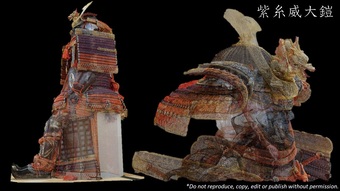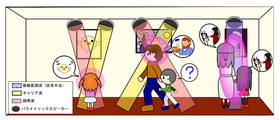-
[イベント情報]2021年4月 5日(月)[イベント情報]2021年3月25日(木)
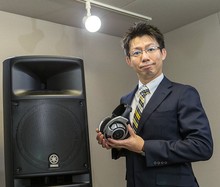 Professor Nishiura, thank you for your time today. Can you please tell us more about your area of research?
Professor Nishiura, thank you for your time today. Can you please tell us more about your area of research?Prof. Nishiura: I joined the College of Information Science and Engineering at Ritsumeikan University in 2004. My research focuses on acoustic signal processing, acoustic systems, and sound interfaces, amongst others.
I conduct integrated research on the analysis, understanding, reproduction, and synthesis of a sound environment to improve society through sound. My goal as a researcher is to create a sound environment for people to live comfortably.
Could you please elaborate on this?
Prof. Nishiura: A practical example may be the visit to the dentist. Many people feel uncomfortable with the dental drilling sound. I have researched and developed a technology of sound esthetics, also called noise-masking so that people are not bothered by the unwanted noise by overlapping it with a pleasant sound.
Furthermore, I have been investigating audio spot technology, a technique to transmit sound only in a specific area. Loudspeakers utilizing ultrasound waves have a higher directivity and can form a narrow audible area to a particular listener, i.e., the audio spot.
This is useful for exhibitions at museums, for example, when you would like to give visitors information relevant to each exhibited object.
[イベント情報]2020年12月25日(金)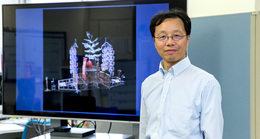 Professor Tanaka, thank you for your time today. Firstly, could you please tell us how you joined the Art Research Center at Ritsumeikan University?
Professor Tanaka, thank you for your time today. Firstly, could you please tell us how you joined the Art Research Center at Ritsumeikan University?Prof. Tanaka: In 2004, the College of Information Science and Engineering was founded at Ritsumeikan University. I was appointed to the Department of Information Science and Engineering in 2002 as a founding member.
Coincidently, the Art Research Center had been selected for the 21st Century Center of Excellence (COE) Program "Kyoto Art Entertainment Innovation Research" by the Ministry of Education, Culture, Sports, Science, and Technology (MEXT) in the same year and so, the joint research started.
Can you please tell us more about your area of research?
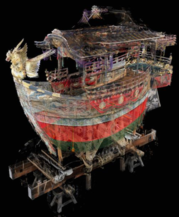 Prof. Tanaka: I conduct research on the ultra-high-quality visualization and visual analysis of cultural heritage to digitally preserve valuable cultural properties in Japan and abroad.
Prof. Tanaka: I conduct research on the ultra-high-quality visualization and visual analysis of cultural heritage to digitally preserve valuable cultural properties in Japan and abroad.By utilizing the latest 3D scanning technologies such as laser scanning and photogrammetry techniques, we can obtain large-scale point-cloud data of cultural assets.
We have proposed a novel method of see-through visualization applicable to point cloud data. This method enables us to visualize the complex inner and outer structures of tangible cultural heritage.
続きを読む>>[イベント情報]2020年9月29日(火)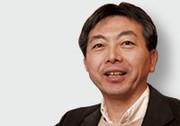 Prof. Yano, thank you for your time today. As an expert in the field of human geography and geographical information science, your research comprises digitally archiving the historical city of Kyoto. Can you tell us about your motivation and how it all started?
Prof. Yano, thank you for your time today. As an expert in the field of human geography and geographical information science, your research comprises digitally archiving the historical city of Kyoto. Can you tell us about your motivation and how it all started?Prof. Yano: The rapid advancement in ICT technology and the development of Internet-based GIS (geographic information system) in the past decades have eased the digitization of cultural assets and their distribution via the Internet.
In the early 2000s, the Department of Geography at Ritsumeikan University had accumulated an enormous amount of geospatial information on the historical city of Kyoto including paper maps, digital maps, and national land information, while the Art Research Center (ARC) had been proactive in using cutting-edge information technologies.
続きを読む>>[イベント情報]2020年6月12日(金)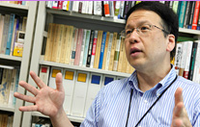 Prof. Hosoi, thank you for your time today. As one of the pioneers in digital game research in Japan, you have successfully expanded the "Game Archive"-project over the last two decades. Moreover, the Ritsumeikan Center for Games Studies (RCGS) has been established in 2011. Could you tell us about your recent updates?
Prof. Hosoi, thank you for your time today. As one of the pioneers in digital game research in Japan, you have successfully expanded the "Game Archive"-project over the last two decades. Moreover, the Ritsumeikan Center for Games Studies (RCGS) has been established in 2011. Could you tell us about your recent updates?Prof. Hosoi: There have been some positive developments in the last 4-5 years. Firstly, government funding from the Agency of Cultural Affairs has been increased for the RCGS which enabled us to create new rooms and facilities for game research and archiving - despite the notorious lack of space on Kinugasa campus.
Secondly, networking has been greatly expanded, especially with overseas institutions. While we only had a few connections with institutions in the US about five years ago, we have been able to form new alliances with overseas institutions, particularly in Europe.
続きを読む>>


